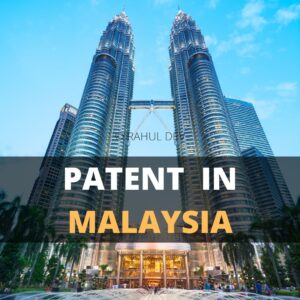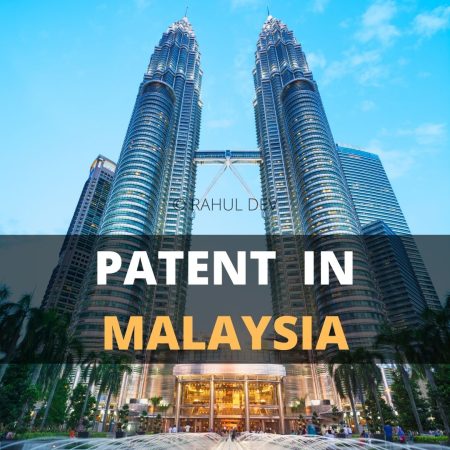Patent Your Unique Idea
Explore the Scope of Patents in Malaysia

Trust, Convenience and Innovation
Understand how you can patent new tools, inventions, software and algorithms

Explore the Scope of Patents in Malaysia

Understand how you can patent new tools, inventions, software and algorithms

Protect your innovations across multiple countries and create strong patent portfolio to boost business valuation
Local and global brand protection through international trademark registrations
Extensive research and business writing for technical whitepapers and B2B content products
The best way to patent an idea in Malaysia is to follow the MyIPO patent guidelines for patent drafting in Malaysia. Among Asian countries, Malaysia offers an interesting option to obtain patent rights in Malaysiathrough two types of patents that are granted in Malaysia. This includes the invention patent and a petty patent. To understand the challenges associated with patent drafting in Malaysia, it is important for the patent inventors to review the patent registration process in Malaysia, types of patents in Malaysia, and best practices for inventors to obtain a patent in Malaysia.
This article covers following topics:
Patent Registration in Malaysia
Drafting Patent Specification in Malaysia
How do I patent a design in Malaysia?

As it is well known, patent drafting or writing patent specification is a critical aspect of intellectual property rights in Malaysia, especially in a rapidly growing economy like Malaysia. Patent Drafting in Malaysia has become a vital component for inventors, businesses, and legal professionals to protect their innovative ideas and inventions. In use, patent drafting is the art of writing a detailed description of an invention, including its functionality, components, and uniqueness, which are presented to the patent office like the MyIPO along with a set of strongly drafted patent claims. In Malaysia, it’s not just about putting ideas on paper, it’s about creating a legal document that can withstand scrutiny and provide robust protection after successfully navigating the patent examination process in Malaysia through the novel and unique nature of the patent claims.
The patent registration process in Malaysia is a multistep procedure that involves several key steps. It begins with identifying the invention, where one must understand the technical field, the specific problem solved, and the background art related to the invention. Next, conducting a patent search in Malaysia is essential, utilizing tools like MYIPO, Google Patent, and the European Patent Office to ensure the novelty of the invention. Following the search, drafting a patent specification is required, which includes a detailed description, claims, drawings, and an abstract that accurately represent the invention.
The next phase involves filing the patent application with the Intellectual Property Corporation of Malaysia (MYIPO), including all necessary details of the applicant, inventor, and invention. The application then undergoes a formality examination conducted by the Examiner to ensure compliance with legal requirements. Given the technical and lengthy nature of the process, engaging a registered Malaysian patent agent is often recommended to navigate the complexities of patent registration in Malaysia.
To obtain patent rights in Malaysia, it is important to understand the essential elements of drafting a strong patent specification in Malaysia. Specifically, the corresponding patent claims shall include all the unique features of invention that are drafted as per the required patent format as specified by MyIPO. A thorough review of the MyIPO sample patent specification reveals that the patent application shall contain various sections in a particular order. To begin the patent drafting process, write a “Title” that is crisp and corresponds with your invention disclosure form and abstract. A general description of the “Technical Field” should be given before a discussion of any pertinent “Background Art.” The “Disclosure of Invention” is where you describe the mandatory and optional components of your innovation. If appropriate, mention “Specification Examples” and make use of any drawings to show how your innovation can be used in practice. Don’t forget to describe the “Industrial Applicability,” particularly if it isn’t immediately clear. Subsequently, the “Claims” section is very important since it specifies the extent of protection for your invention and needs to be carefully drafted to prevent any openings that rivals might take advantage of. Finish the patent application with an “Abstract” that is no longer than 150 words and includes any relevant pictures as a crisp summary for search purposes. After completing all of these processes, be sure to proofread and edit the entire manuscript to ensure its accuracy and thoroughness.
The best way to find an example of patent in Malaysia is to use the PATENTSCOPE patent searching database of WIPO. Essentially, any set of keywords can be used to find a set of patents that cover a particular technology sector. Thereafter, the search results can be filtered by “Offices” section that will specifically provide a list of patents filed through the Malaysian Patent Office once the office is selected as Malaysia. For example, Application Number PI 20002572 relates to a “NOVEL DRUG DELIVERY SYSTEM: FORMULATION FOR FAT-SOLUBLE DRUGS” which self-emulsify in the presence of an aqueous medium with little agitation. More specifically, this invention is concerned with the formulation of a new dosage form for fat-soluble drugs in the form of a soft-gelatin capsule which forms emulsion instantly when the contents are released and mixed with gastrointestinal fluid. the formulation comprises a suitable mixture of drug with an appropriate oil and an appropriate surfactant system.
Similarly, Application Number PI 20070556 filed by UNIGEN PHARMACEUTICALS, INC. for an invention titled “FORMULATION OF DUAL EICOSANOID SYSTEM AND CYTOKINE SYSTEM INHIBITORS FOR USE IN THE PREVENTION AND TREATMENT OF ORAL DISEASE AND CONDITIONS” discloses formulation of dual eicosanoid system and cytokine system inhibitors for use in the prevention and treatment of oral diseases and conditions. This invention provides a novel composition of matter comprised of a mixture of two specific classes of compounds –free-B-ring flavonoids and flavans– for use in the prevention and treatment of diseases and conditions associated with mouth, gums and teeth.
In Malaysia, various types of patents are offered to cater to different needs and industries. Utility Patents are granted for inventions that are novel and have industrial applicability, providing protection for innovative products and processes. Alongside Utility Patents, there are specific considerations for pharmaceutical patents in Malaysia, including provisions for patent term extension and data exclusivity, ensuring that pharmaceutical innovations receive appropriate protection. Patent drafting in Malaysia is not without its challenges, such as understanding intricate legal requirements, meeting stringent deadlines, and ensuring compliance with international standards. To overcome these challenges, solutions include engaging professional patent attorneys who are well-versed in Malaysian patent law, diligently following best practices, and staying abreast of the latest rules and regulations. This comprehensive approach ensures that patent drafting in Malaysia is conducted with precision and adherence to all relevant legal guidelines.
Patenting a design in Malaysia involves a specific process that ensures the protection of the visual appearance of a product, focusing on the aesthetic aspects, unlike utility patents. The Malaysian patent process begins with identifying the unique visual elements of the design, including shape, configuration, pattern, or ornamentation. A design search must be conducted using tools like MYIPO to ensure the uniqueness of the design by checking for existing registered designs. Detailed drawings or photographs that accurately represent the design from multiple angles must be prepared, followed by completing the application form with details of the applicant, designer, and a description of the design. The design patent application is then submitted to the Intellectual Property Corporation of Malaysia (MYIPO) along with the prescribed fee. MYIPO conducts a formal examination to ensure compliance with legal requirements, and once approved, the design is published, allowing for potential opposition from third parties. If no opposition is filed, the design is registered, providing protection to the owners of design.
In Malaysia, the eligibility of patentable inventions is clearly defined, and there are specific categories of inventions that are explicitly excluded from patent protection. These unpatentable subjects include a range of items and concepts that are generally considered to be outside the scope of concrete, functional inventions. For example, discoveries, scientific theories, and mathematical methods are viewed as abstract intellectual constructs rather than tangible inventions that can be patented. Similarly, aesthetic creations like artwork, literature, and music are not eligible for patent protection, as they are considered expressions of art rather than inventions with a specific utility. Business schemes, rules for games, and methods for performing mental acts also fall under the category of unpatentable subject matter, as they lack a concrete, technical application. Computer programs are another area where patent protection is generally not granted unless the software program has a specific technical application that goes beyond the software itself. Lastly, methods for treating the human or animal body, whether through surgery, therapy, or diagnostic techniques, are also excluded from patent eligibility. These exclusions from patent rights in Malaysia aim to maintain the integrity of the patent system by ensuring that only truly novel and useful inventions are granted patent protection in Malaysia.
The process of filing a patent application in Malaysia offers linguistic flexibility, as the Intellectual Property Corporation of Malaysia (MYIPO) accepts submissions in both English and Bahasa Malaysia. This dual-language option caters to a diverse range of applicants, both local and international, facilitating a more inclusive approach to intellectual property rights in the country. Despite this linguistic versatility, it remains crucial for applicants of Malaysian patent to adhere to stringent guidelines concerning the clarity, conciseness, and technical precision of the patent application. This is because a well-drafted patent application is not merely a formality but a legal document that must meet specific legal and technical criteria to ensure robust protection in Malaysian markets for the invention in question.

As a business coach and thought leader, I cannot emphasize enough the importance of innovation, new software patents, mobile apps, and patents for tech companies, startups, and entrepreneurs. The world is rapidly evolving, and staying ahead of the curve is vital for success. Embracing technological advancements such as blockchain and AI can unlock unprecedented opportunities, streamline operations, and propel businesses into the future with competitive valuation via intangible assets.
Click Here for AI Startup Valuation Guide.
For instance, blockchain technology can revolutionize supply chain management and secure data sharing wherein innovative business models are explained to the audience via technical whitepapers, while AI can automate and optimize decision-making processes. Mobile apps are no longer just a luxury; they have become essential tools for engaging customers and offering personalized experiences. Furthermore, securing digital innovation patents is crucial for protecting intellectual property, fostering innovation, and maintaining a competitive edge. By investing in these areas, businesses can position themselves as industry pioneers and pave the way for a prosperous future after thoroughly conducting the due diligence and reviewing the legal opinion letters, which in case of digital assets can assist in determining the tokens as utility assets or coins as utility tokens before listing the assets at an exchange.
Our team of advanced patent attorneys assists clients with patent searches, drafting patent applications, and patent (intellectual property) agreements, including licensing and non-disclosure agreements. Advocate Rahul Dev is a Patent Attorney & International Business Lawyer practicing Technology, Intellectual Property & Corporate Laws. He is reachable at rd (at) patentbusinesslawyer (dot) com & @rdpatentlawyer on Twitter.
Quoted in and contributed to 50+ national & international publications (Bloomberg, FirstPost, SwissInfo, Outlook Money, Yahoo News, Times of India, Economic Times, Business Standard, Quartz, Global Legal Post, International Bar Association, LawAsia, BioSpectrum Asia, Digital News Asia, e27, Leaders Speak, Entrepreneur India, VCCircle, AutoTech).
Regularly invited to speak at international & national platforms (conferences, TV channels, seminars, corporate trainings, government workshops) on technology, patents, business strategy, legal developments, leadership & management.
Working closely with patent attorneys along with international law firms with significant experience with lawyers in Asia Pacific providing services to clients in US and Europe. Flagship services include international patent and trademark filings, patent services in India and global patent consulting services.
Global Blockchain Lawyers (www.GlobalBlockchainLawyers.com) is a digital platform to discuss legal issues, latest technology and legal developments, and applicable laws in the dynamic field of Digital Currency, Blockchain, Bitcoin, Cryptocurrency and raising capital through the sale of tokens or coins (ICO or Initial Coin Offerings).
Blockchain ecosystem in India is evolving at a rapid pace and a proactive legal approach is required by blockchain lawyers in India to understand the complex nature of applicable laws and regulations.